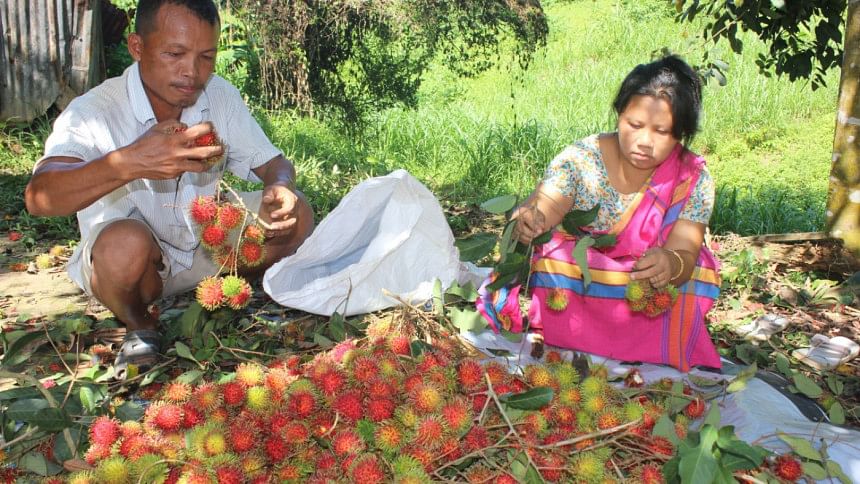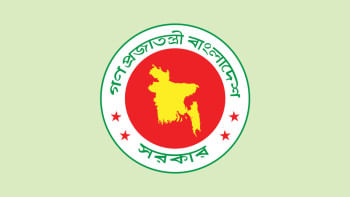Rambutan gaining popularity in Rangamati

In 2008, Somoyon Chakma’s brother brought two seeds of rambutan, a tropical fruit closely related to the litchi, from Thailand. He then grew a rambutan plant in the courtyard of his house from the seeds. After five long years, the tree finally bore fruits in 2013.
The 40-year-old from Lumbini area of Rangamati town has already earned Tk 6 lakh by selling rambutan fruits and seedlings.
Rambutan is one of the well-known fruits of Southeast Asia. The fruit is also widely cultivated in many other places including Africa, the Caribbean Islands, Costa Rica, Honduras, Panama, India, the Philippines and Sri Lanka, while Thailand remains its largest producer.
Papan Kumar Chakma, deputy director of Department of Agricultural Extension (DAE) in the district, said alhough the fruit is still not commercially cultivated in Rangamati, some rambutan trees can be seen in courtyards around houses. The fruit has begun gaining popularity amongst the locals in Rangamati.
Its flower blooms at the end of April and the fruit begins to ripen from the first week of July.
“I earned Tk 6 lakh from the rambutan tree by selling the fruits and seedlings in the last two years,” said Somoyon.
“I’m expecting to get Tk 4 lakh by selling the fruits and seedlings,” he said.
“Each fruit is sold for Tk 5 to Tk 8 and seedling for Tk 150 to Tk 250. It already has a high demand in the market,” said Somoyon, adding that people are now coming to house to buy the seedlings.
Inspired by his success, many people have started planting rambutan trees.
Sonamoni Chakma of Khagrachhari said he has already collected 200 seedlings of rambutan from Somoyon.
Somoyon said it will be beneficial to plant the trees in hilly areas as the weather is very favourable.
DAE officials of the district said they have no information yet about the growing of rambutan fruits.
However, agriculturalists in the district have recently started seeing the possibility of fruit gardens in the hilly areas which would be suitable for rambutan cultivation, he said.
DAE official Papan Kumar said Rambutan trees are being seen in some of the houses in Rangamati. The yield is also visible.
Even though it is not yet being commercially grown, the fruit has good potential to support cultivators’ incomes, if proper agricultural practices are followed, he said.

 For all latest news, follow The Daily Star's Google News channel.
For all latest news, follow The Daily Star's Google News channel. 



Comments